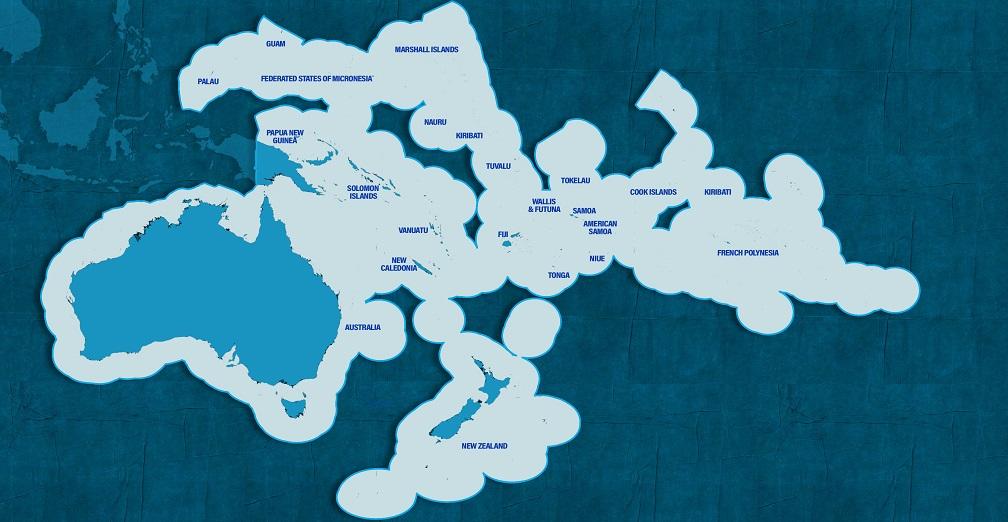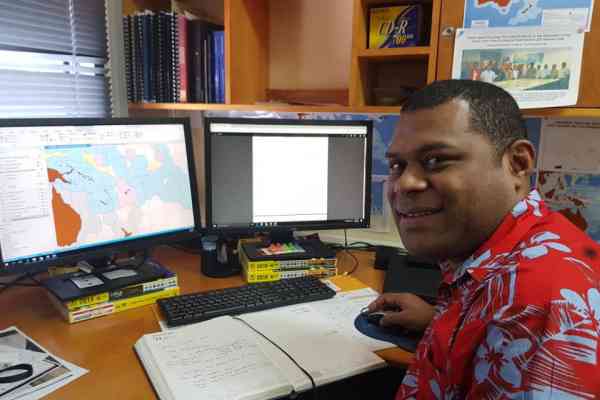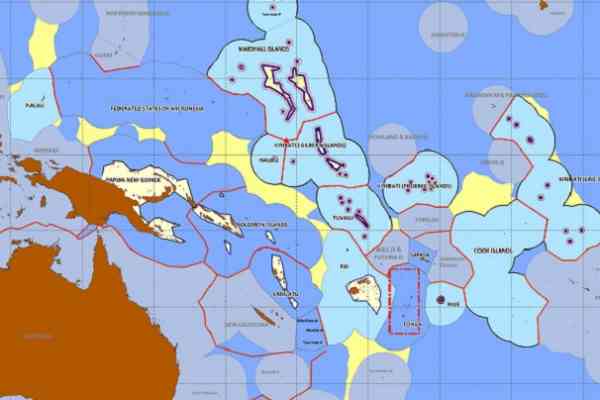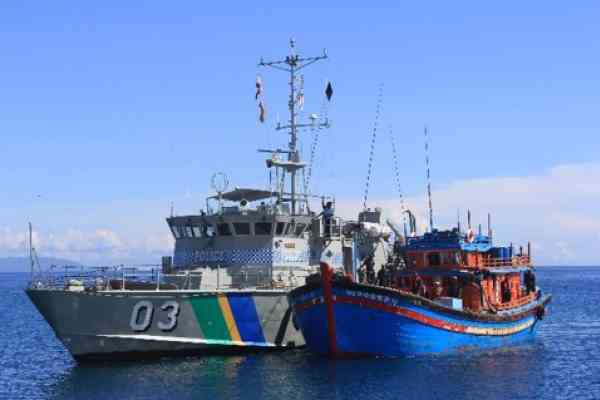by Andrew Jones
Pacific people are leaders on the global stage, connected by our vast Blue Pacific in a way that land-based continents can never be.
The coconut that falls in the ocean in Fiji will wash up on the shores of French Polynesia. The tuna that are born in Papua New Guinea will swim to Kiribati. We are thousands of kilometres apart and yet completely connected.
Our Maritime boundaries reflect this connectedness across our Blue Pacific continent. Our ocean space accounts for 42 million kilometres2 home to more than 42 million people spread across 24 Pacific Island countries and territories.
There are 48 places in our Pacific Ocean where two countries share a maritime boundary. Almost 75% of these boundaries have been negotiated and the Pacific is leading the globe on this process with only around 60% of the rest of the world’s boundaries being at the same level of completion. This underpins our role as global leaders in the ocean space.
Many people would wonder why, the Pacific are leading the rest of the world in negotiating these maritime zones. In essence this reality comes from many factors including a common understanding within a community of practice that is dedicated to sharing data and technical expertise to ensure what has been protected for thousands of years by indigenous Pacific cultures, is recognised and protected for thousands more.
It has also come from a Consortium based approach providing complementary skills and expertise to support countries at technical, legal and political stages for more than two decades. SPC’s role as the Consortium coordinator and technical backstop over the past 15 of these years has meant venturing to remote islands to determine where our basepoints are to ensure this process can be recognised and finalised for and alongside our Members.
However, when I think about why Pacific peoples are leaders on the global stage, I think about their role as custodians of the Blue Pacific. Custodians of 30% of global Exclusive Economic Zones. Custodians of 100% of Pacific culture, traditional knowledge and heritage. It is not a role that Pacific people are assigned by their government. It is a role Pacific people are born with, as part of their heritage or as the famous contemporary Pacific scholar Epeli Hau’ofa stated ‘Oceania’ connotes a sea of islands with their inhabitants. The Pacific peoples are intrinsically the ocean, the land, the people, the culture and the future of our Blue Pacific region.
The future of our Blue Pacific
Pacific leadership in this work is critical is a geopolitical and economic context. It is only through delimiting, negotiating and declaring our Maritime Boundaries that we can ensure certainty of jurisdiction, certainty of resources, and certainty of statehood.
Policing and strengthening national and regional security whilst accessing benefits from fisheries, minerals, marine conservation, and maritime transport rely on certainty of our maritime boundaries. These are not just lines on a map.
Pacific Leaders have committed to a collective effort to finalise the delimitation of maritime zones. The remaining 13 shared boundaries will require an even greater collective effort than we have shown as a region until now.
In that light SPC is currently working with partners to design the next phase of the Pacific Maritime Boundaries Project post-2021. This will focus on technical work to conclude boundaries, support Extended Continental Shelf submissions, and look at the ‘next stage’ applications of Maritime Boundaries to critical economic sectors, human security, cultural heritage and migration.
The Pacific’s custodianship is more critical now than ever before. The world is set to exceed temperature increase beyond 1.5 degrees Celsius, at which stage we stand to lose between 70-90% of our coral, and there will be severe consequences for coastal stability and food security. We will see a continued relative increase in more intense cyclones, ocean acidification, and sea-level rise that threatens low lying islands and sandy cays, many of which form the base points of many of our Maritime Boundaries.
Some things we can adapt to. But there are also limits to adaptation. We must make every effort to secure what we can. We will not be observers in the future of our Blue Pacific in the face of external influences. We will instead use our informed traditional knowledge and custodianship to continue to maintain a sustainable and healthy Pacific Ocean for our future generations. Maritime Boundaries and jurisdictional certainty are priorities amongst this.
Our Leaders’ recognise our maritime boundaries will not be challenged or reduced as a result of sea level rise or climate change, but we must ensure our region reaches 100% of delimitation to further support this. This is because the United Nationals Law of the Sea (UNCLOS) does not provide absolute certainty over ocean space in the face of climate change and rising sea levels and our Pacific region is ready to lead this discussion.
Towards that end SPC started a project last year funded by DFAT- the Resilient Boundaries for the Blue Pacific project, which takes a risk-based approach, analysing the basepoints that generate maritime zones across the region and identifying potential technical and legal solutions to ensure we retain our rights to maritime jurisdictions in the face of rising sea levels.
Our Blue Pacific is at the core of our people, culture and economies. Ensuring our boundaries remain unaffected by changes caused by climate change including sea level rise, will ensure sustainable livelihoods for our future and peoples for generations to come.
This opinion editorial is a short version of Dr Andrew Jones’ remarks at the opening of the first ever Fiji Maritime Boundaries Workshop to discuss the importance of Maritime Zones. This workshop was funded by the European Union through its Pacific European Union Marine Partnership (PEUMP) and supported by the Pacific Regional Maritime Boundaries Project.



